AI in KYC Automation: 7 Low-Code Advantages You Need in 2025
Date
Aug 01, 25
Reading Time
11 Minutes
Category
Low-Code/No-Code Development
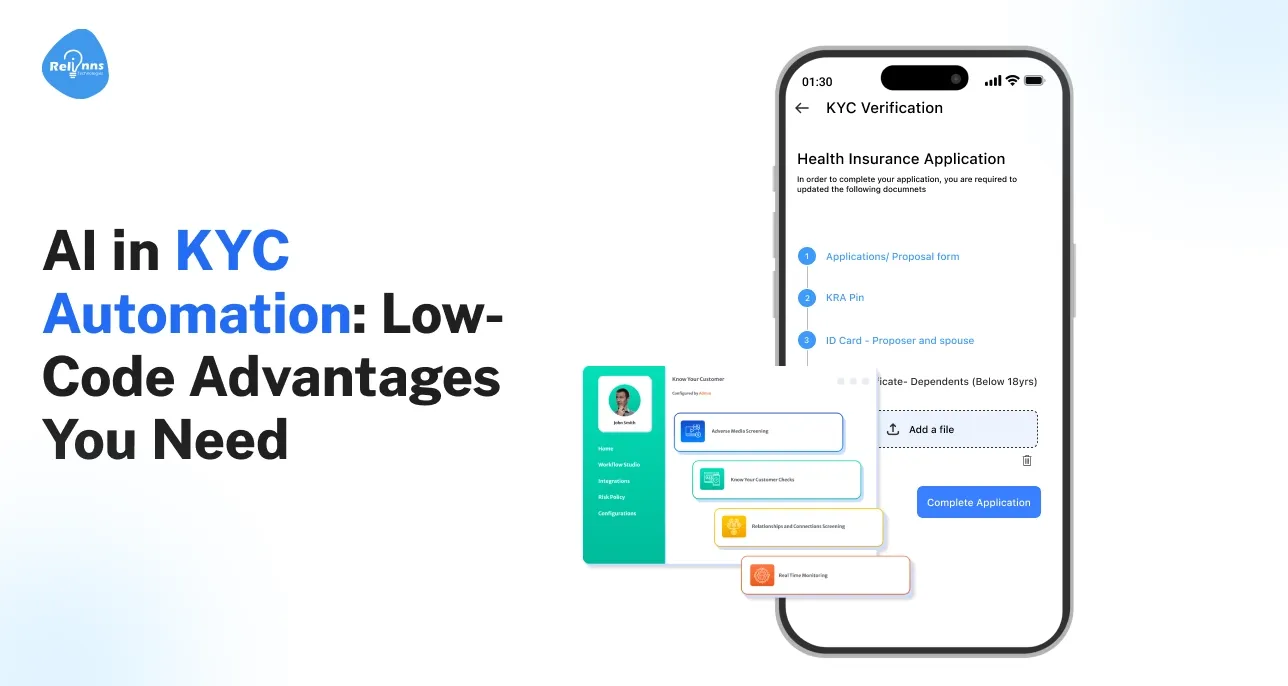
KYC (Know Your Customer) is a process that financial institutions and other regulated businesses use to verify customer identities and manage risk. It helps protect organizations from fraud, money laundering, and other financial crimes.
KYC compliance is mandatory in banking, fintech, insurance, and many non-financial sectors under global AML regulations.
According to research, 63% of European customers abandoned banking apps in 2020 due to slow and complex onboarding processes. (Source: Finextra) Low-code development platforms enable organizations to build and modify applications rapidly with minimal manual coding.
By utilizing visual drag-and-drop tools, businesses can deliver new capabilities more quickly and free up IT resources.
When combined with artificial intelligence (AI) such as machine learning for identity verification and optical character recognition for document scanning, these platforms can automate entire KYC workflows.
AI in KYC Automation is a game-changing approach that speeds up verification, improves accuracy, and ensures compliance.
Reason 1: Accelerated Customer Onboarding
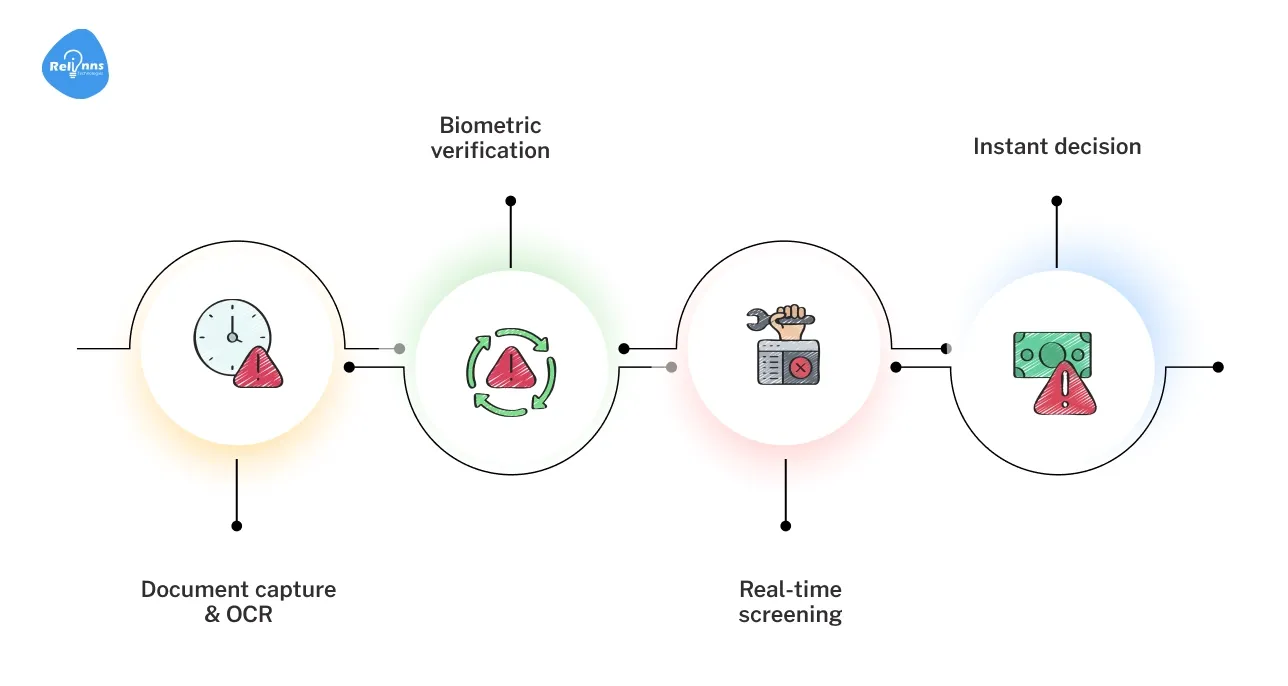
Lengthy manual KYC checks have long been a bottleneck in customer onboarding.
With low-code no-code app development, banks and fintech firms can quickly build these automated workflows. Automated systems verify IDs in minutes instead of days, allowing customers to gain account access rapidly.
This leads to higher completion rates and faster customer acquisition.
For example, a typical AI-powered KYC workflow might include the following automated steps.
- Document capture & OCR: Customers upload identity documents via mobile or web. Optical character recognition automatically extracts text fields without manual data entry.
- Biometric verification: AI compares a live selfie or video to the ID photo to confirm identity and detect liveness. This step uses facial recognition to prevent impersonation.
- Real-time screening: The system instantly checks customer data against global watchlists, sanction lists, and fraud databases to flag any risks or negative matches.
- Instant decision: The KYC workflow returns an immediate result to the user, notifying them of approval. This instant feedback replaces long queues and paperwork.
In practice, these improvements yield tangible results.
For example, integrating these tools into a bank’s mobile app can boost the number of completed applications – customers open accounts from their phones, not from branches.
Low-code also enables teams to refine the process on the fly. If analytics indicate that a specific form field is causing drop-offs, non-technical staff can modify the form in hours instead of months.
Altogether, accelerated onboarding via low-code AI KYC turns a multi-day paper chase into an instant digital sign-up journey.
Using AI in KYC Automation is key to achieving these results.
Reason 2: Enhanced Accuracy and Compliance
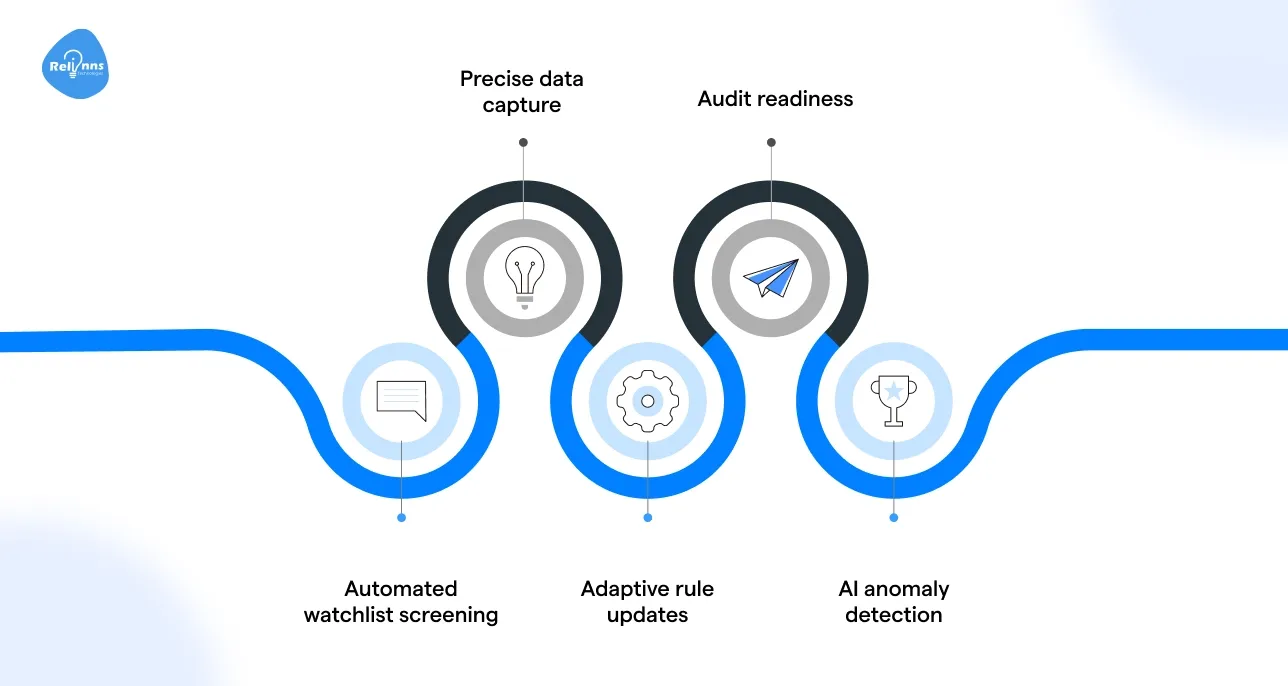
Traditional, manual KYC processes are error-prone and make compliance difficult at scale.
Automated systems extract and validate customer data accurately (via OCR and AI), eliminating transcription errors and inconsistencies.
For example, modern platforms instantly flag matches against sanctions and Politically Exposed Person lists, ensuring that AML/CFT regulations are enforced automatically.
Key enhancements
- Automated watchlist screening: The system continuously checks names and documents against updated sanction, PEP, and criminal watchlists in real time.
- Precise data capture: OCR and AI ensure that all identity documents are accurately read, preventing errors that can occur with manual entry.
- Adaptive rule updates: Compliance rules (e.g., AML thresholds) can be updated in the platform without requiring code changes, ensuring regulations are applied instantly.
- Audit readiness: Every verification step is logged and time-stamped, simplifying regulatory audits and proving compliance.
- AI anomaly detection: Machine learning models identify unusual transaction or identity patterns that static rules might miss, helping to catch sophisticated fraud attempts.
Each of these accuracy and compliance features runs on a low-code platform, so compliance teams can update workflows rapidly as rules change.
With AI in KYC Automation, adherence to all regulations becomes automatic and the risk of costly compliance failures is significantly reduced.
AI in KYC Automation ensures robust, up-to-date compliance.
Reason 3: Cost Efficiency and Resource Optimization
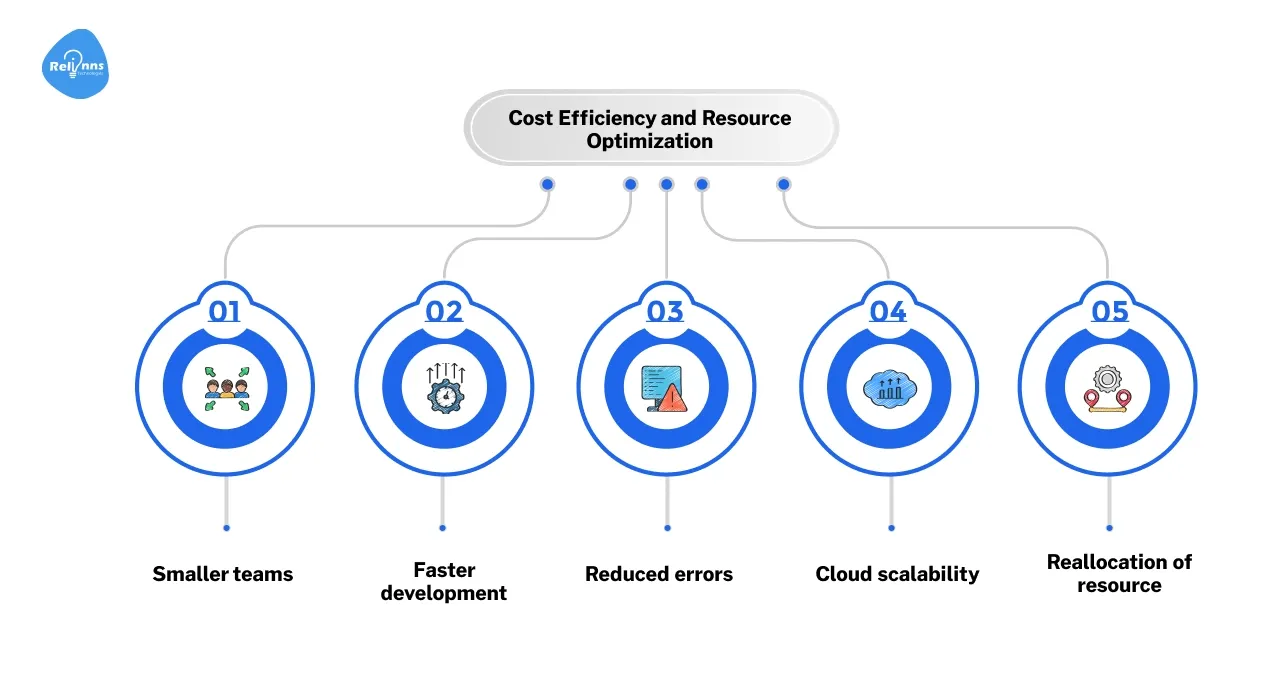
KYC automation delivers significant cost savings and leaner operations. Traditional identity reviews often require large teams of analysts, which drives up payroll and training costs.
Research indicates that banks allocate approximately $30 million annually for KYC compliance activities. By contrast, using AI in KYC Automation replaces much of this manual work.
Automated platforms can verify far more customers with the exact headcount. For example, one AI system can handle hundreds of checks concurrently, whereas manual review would require hiring more staff.
AI in KYC Automation also reduces errors, meaning fewer false positives and less time spent on re-investigation.
Key cost-saving features
- Smaller teams: Automated checks reduce the number of human reviewers needed, lowering staffing and training costs.
- Faster development: Low-code development utilizes pre-built components and drag-and-drop functionality, reducing development time and expense.
- Reduced errors: Fewer false positives from accurate AI checks means less time spent on re-investigating cases.
- Cloud scalability: Automated systems can scale on demand for peak periods without requiring additional servers or personnel.
- Reallocation of resources: Freed-up compliance and IT staff can focus on high-value tasks, such as strategic risk planning and customer relationship management.
Overall, AI in KYC Automation helps organizations achieve more with less, reducing per-customer verification costs while enhancing efficiency.
Suggested Reading: What is an Automated KYC Solution? How to Build One with Joget
Reason 4: Improved User Experience and Accessibility
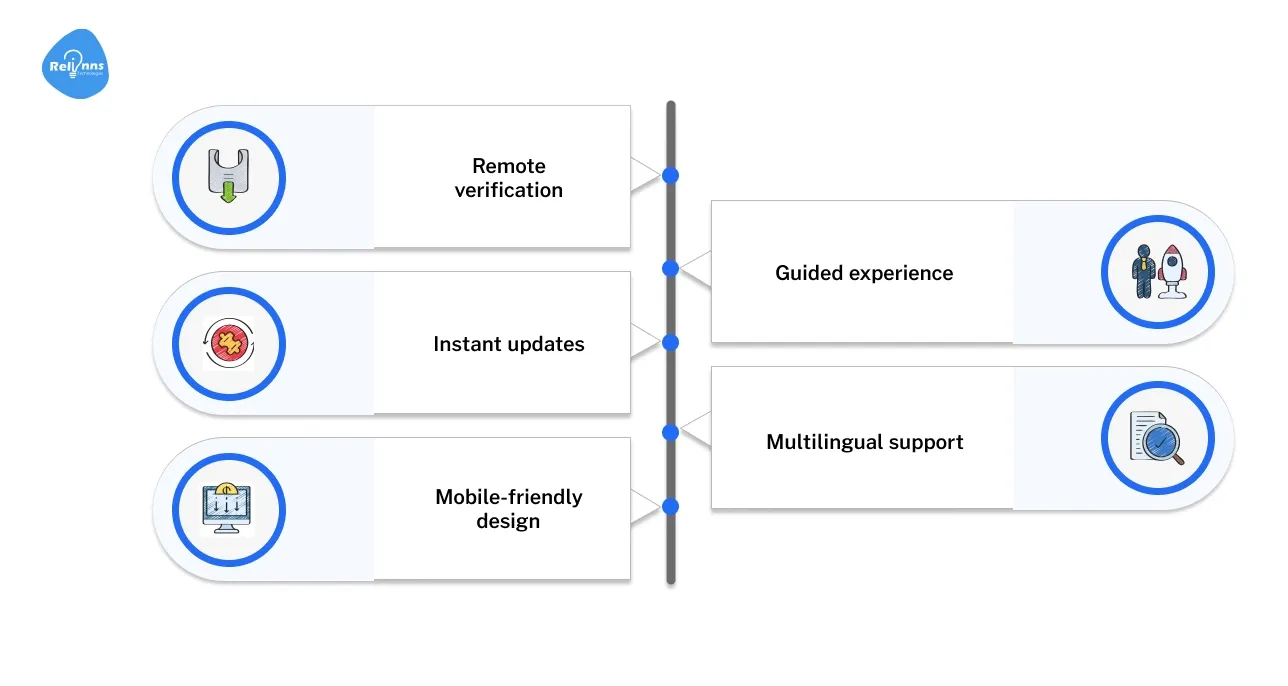
Customers today expect fast, mobile-first experiences. AI in KYC Automation removes friction from identity checks by minimizing steps and meeting users on their preferred devices.
With digital KYC, customers can complete identity checks remotely via their smartphone or web, eliminating the need for in-person visits and paperwork.
These systems offer 24/7 availability, so users can start onboarding at any time. Automated KYC also provides real-time feedback, eliminating confusion and the need for repeated submissions.
By contrast, slow manual checks often lead to abandonment and frustration.
Key user-experience enhancements
- Remote verification: Customers can submit IDs and selfies from home or on the go, making onboarding fully digital and paperless.
- Instant updates: Applicants receive immediate status notifications and clear guidance (such as “retake photo”), instead of waiting days for results.
- Mobile-friendly design: Interfaces are optimized for phones and tablets, using camera capture and simple prompts to streamline data entry.
- Guided experience: The workflow can instruct users in real time (for example, prompting them to tilt their ID for a clearer scan), reducing mistakes and support calls.
- Multilingual support: Automated KYC workflows can accommodate multiple languages, ensuring a smoother onboarding experience for individuals from diverse linguistic backgrounds.
These features create a fast, convenient onboarding journey.
A smoother KYC process means more users complete sign-up, boosting conversion rates and long-term satisfaction without sacrificing security.
Reason 5: Scalability and Flexibility
As businesses grow or face sudden demand spikes, KYC systems must scale seamlessly to meet these demands.
AI in KYC Automation is inherently scalable: cloud-based verification can handle thousands of identity checks in parallel without extra hardware.
Low-code platforms add flexibility, enabling teams to spin up or tweak KYC workflows rapidly.
Low-code adds responsiveness: launching a new product or compliance rule can be done in days. When a bank enters a new country, its team can clone the existing KYC workflow and adjust it for local ID types, rather than building it from scratch.
This modular approach saves time and IT budget.
Key scalability features

- Cloud-native verification: Auto-scaling infrastructure handles an increased number of KYC requests (API calls, face scans) as needed, ensuring service levels remain high.
- Configurable workflows: New markets or products can reuse existing KYC flows with minimal adjustments.
- Parallel processing: AI engines can verify multiple IDs or transactions simultaneously, giving near-constant throughput during volume surges.
- Resource efficiency: Unlike legacy systems that slow down under load, AI KYC maintains performance and accuracy at any scale.
- Rapid deployment: Low-code platforms enable quick rollout of new KYC features, allowing businesses to scale operations or enter new markets in days, not months.
These capabilities enable institutions to add customers or services without re-architecting their IT.
Low-code flexibility ensures rapid adaptation – for instance, a new regulation or customer segment can be supported by tweaking an existing workflow rather than building a new system from scratch.
Reason 6: Real-Time Risk Assessment and Fraud Detection
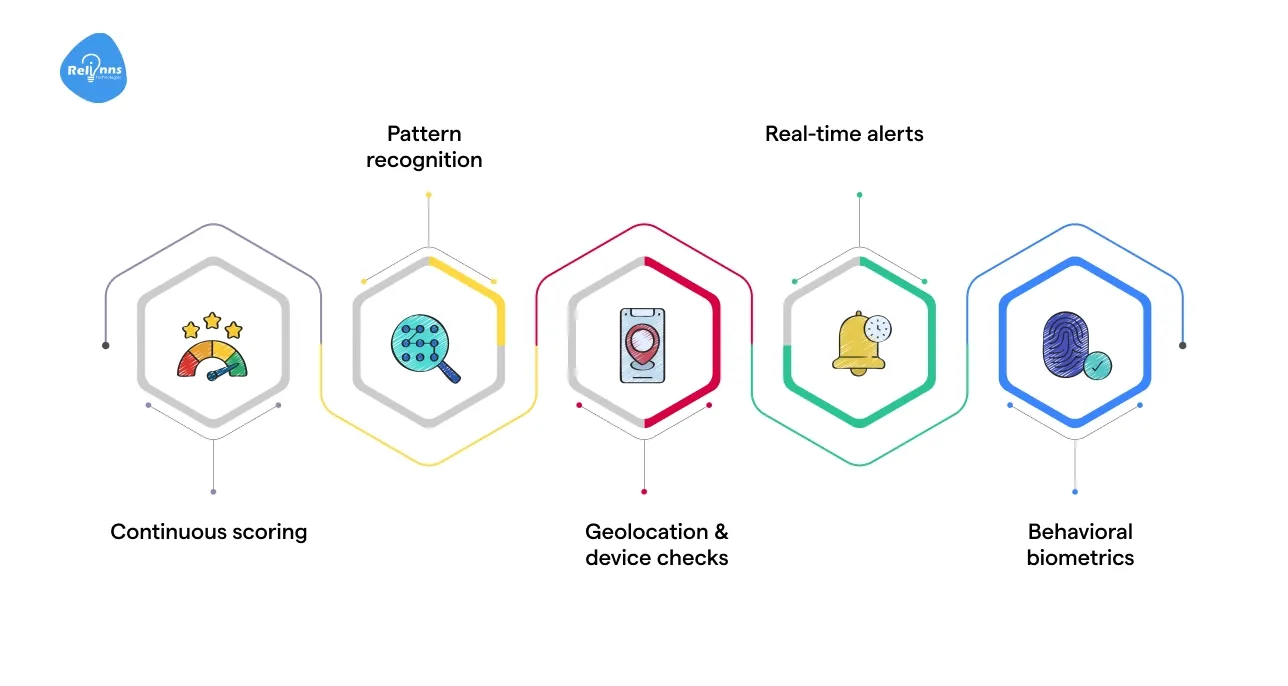
Modern KYC systems utilize AI to detect and prevent occurrences. AI in KYC Automation assigns a risk score to each transaction or new customer in real-time.
Machine learning models analyze behaviors (such as transaction size, location, and device) and immediately flag anomalies.
AI models also continuously learn from new fraud patterns. If a novel scam emerges, the system can be updated with new training data to catch similar attempts.
This adaptive defense keeps security one step ahead of criminals.
Key fraud-prevention features
- Continuous scoring: Every action updates the customer’s risk profile, allowing instant approval or hold on suspicious requests.
- Pattern recognition: AI detects hidden fraud patterns (such as shared addresses or devices) that static rules may miss.
- Geolocation & device checks: The system flags transactions from unexpected locations or devices (e.g., a login from a foreign IP address).
- Real-time alerts: When AI spots an issue, it notifies compliance officers immediately and can automatically initiate additional checks or hold funds.
- Behavioral biometrics: AI monitors typing speed, mouse movement to detect anomalies that may indicate identity fraud or account takeover attempts.
With these real-time controls, organizations gain a proactive defense against cyber threats.
AI in KYC Automation makes risk assessment an ongoing process. Each transaction is evaluated dynamically, helping to prevent fraud before it escalates and reducing potential losses.
Reason 7: Seamless Integration with Existing Systems
A KYC solution often needs to work with multiple systems (account origination, credit bureaus, AML engines, etc.).
Low-code platforms are designed for integration, offering visual tools, built-in APIs, and connectors to link disparate data sources.
This means an organization can embed AI in KYC Automation without rewriting its core banking or CRM software.
For example, a low-code workflow can retrieve customer records from the database, invoke an external identity verification API, and then update the customer’s status — all within a single process.
Because AI-driven KYC modules also expose RESTful APIs, they integrate seamlessly.
Key integration capabilities
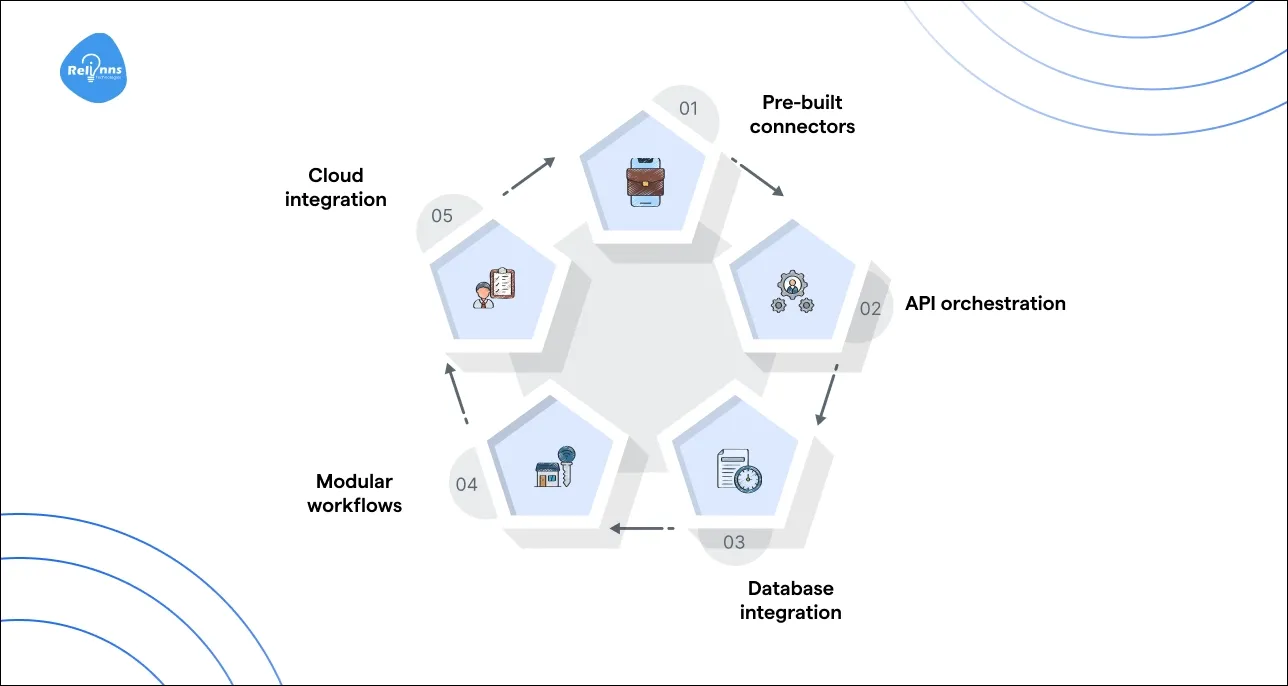
- Pre-built connectors: Many low-code platforms include modules for standard services, making it easy to add KYC steps.
- API orchestration: The workflow can call external services (such as government ID checks and AML screening) via APIs without requiring custom code.
- Database integration: Connect directly to existing customer databases or data lakes to reuse master data and avoid duplicate entry.
- Modular workflows: Low-code processes can be triggered from legacy systems – for instance, linking a loan application form to an automated KYC flow behind the scenes.
- Cloud integration: Because workflows can interface with on-premises systems via secure VPN or hybrid connectors, bridging old and new infrastructure.
These integration features allow companies to modernize KYC without overhauling IT infrastructure.
AI in KYC Automation works alongside legacy systems, enabling a unified, automated process that taps existing data and services to enhance verification.
Why AI in KYC Automation with Low-Code Is a Game-Changer for Modern Businesses
In today’s digital-first world, compliance, speed, and user experience are crucial to a seamless customer onboarding process.
This article explored seven powerful reasons why AI in KYC Automation, when combined with low-code development, transforms how organizations manage identity verification and regulatory compliance.
From accelerated onboarding and enhanced accuracy to cost efficiency, scalability, and real-time fraud prevention, each benefit shows how intelligent automation helps businesses thrive.
Low-code enables teams to build, adapt, and deploy KYC solutions without the heavy lifting, while AI ensures every check is fast, secure, and precise.
Why Choose Relinns for KYC Automation?
Relinns is your strategic partner for KYC automation with 8+ years of experience. Here’s why industry leaders trust us.
- Generative AI Expertise: From AI chatbots to Agentic AI, we have done it all. Let us tailor your preferred AI model to your banking workflow.
- Low-Code, No-Code Development: We specialize in building powerful KYC workflows without writing code, enabling rapid deployment and easy updates.
- Flexible Outsourcing Models: Hire hourly, part-time, or full-time developers — up to 70% more cost-effective than native-market teams.
- MVP Development Experts: We help you launch lean KYC products fast, test the market, and iterate rapidly.
- Agile Methodology: Our development process is optimized for cost savings and flexibility, reducing go-to-market friction.
Frequently Asked Questions (FAQ's)
What are the future trends in AI in KYC Automation?
AI in KYC Automation is evolving to include predictive analytics, blockchain verification, and adaptive compliance scoring, enhancing fraud detection and regulatory accuracy across dynamic onboarding environments.
How secure is AI in KYC Automation for data privacy?
It leverages encryption, biometric security, role-based access, and GDPR-compliant protocols to ensure personal data is protected throughout the KYC automation lifecycle.
Can small businesses use KYC automation effectively?
Absolutely. Modern low-code KYC automation tools provide scalable, budget-friendly workflows specifically designed for small businesses with limited IT resources and rapid deployment requirements.
Does AI in KYC Automation reduce false positives in screening?
Yes. AI in KYC Automation continuously learns and refines matching logic to minimize false positives and drastically improve verification accuracy over time.
How does KYC automation integrate with CRM systems?
KYC automation integrates seamlessly with CRMs via prebuilt APIs or low-code connectors, enabling the real-time synchronization of verified user profiles across onboarding and engagement pipelines.
Is KYC automation customizable for different industries?
Yes, it offers customizable workflows to meet sector-specific compliance needs, whether in the banking, real estate, cryptocurrency, healthcare, or insurance industries.


